Sốt Sa Tế (Vietnamese Lemongrass Chili Oil) is a bold, aromatic condiment that adds a spicy kick to noodles, soups, dipping sauces, marinades, and grilled or stir-fried dishes.
Ready in just 15 minutes, it’s a must-have for any Asian food lover!

What’s Inside
What is Sa Tế ?
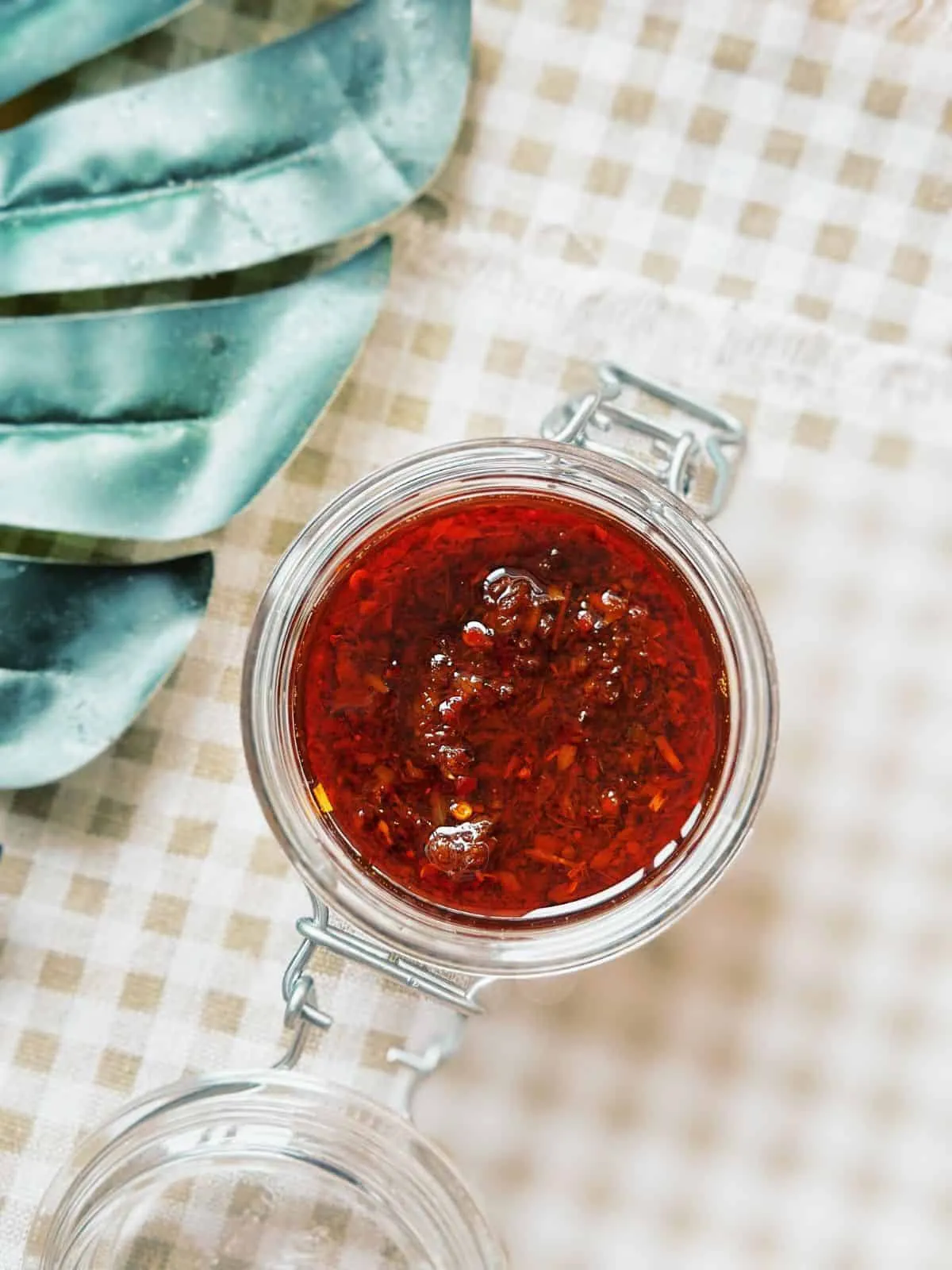
Sa Tế actually came from Shacha sauce — a savory, slightly spicy Chinese condiment that’s popular in Teochew, Hokkien, and Taiwanese cooking.
It was brought to Vietnam long ago by Chinese migrants, known as the Hoa people.
The original Shacha sauce was made with soybean oil, garlic, shallots, chili, dried shrimp, and Chinese brill — rich, fragrant, and full of umami.
But when it arrived in Vietnam, locals gave it a twist in their own way: they added lemongrass. That one ingredient delivered the sauce a bright, citrusy aroma.
Over time, Vietnamese Sa Tế grew apart from its Chinese ancestor. And despite the name, both have nothing to do with the peanut-based satay sauces you find in Thailand, Malaysia, or Indonesia.
In Southern Chinese coastal cooking, you’ll find plenty of beloved sauces like XO, Hoisin, or Char Siu sauce.
A quick look at 3 popular Asian chili sauces
Sốt Sa Tế (Vietnamese Lemongrass Chili Oil):
This one’s all about that bold lemongrass aroma — zesty, fragrant, and so unmistakably Vietnamese. It’s beautifully rounded out with garlic, shallots, and a splash of fish sauce for that deep umami flavor.
Chinese Chili Oil:
A true flavor bomb packed with warm spices like Sichuan peppercorns, star anise, cinnamon, and bay leaves. It’s that magical condiment that goes with almost everything — from chili oil noodles and chili oil fried eggs to fried jasmine rice.
Sambal Oelek:
Coming from the Javanese people of Malaysia and Indonesia. At its heart, it’s made by stir-frying crushed chilies (fresh or dried) in oil, often with shrimp paste (belacan), palm sugar, and tamarind for a balance of sweet, salty, and tangy.
It’s the soul of Malaysia’s national dish, Nasi Lemak.
Ingredients for Sate Chili Oil
To make things simpler, I went with dried chili flakes and chili powder instead of fresh chilies. I also skipped the fish sauce so the recipe stays completely vegan-friendly.
- Crushed chili flakes: I used a mix of two kinds — Chinese chili flakes for heat and gochugaru (Korean chili flakes) for that beautiful deep red color.
- Lemongrass: The real star of the show. Its bright, citrusy aroma gives the sauce its signature Vietnamese flavor.
- Garlic and shallots: Can’t skip these! They’re the foundation of that rich, fragrant sate flavor we all love.
- Galangal (optional): A little bit goes a long way. It adds a subtle depth and warmth to the sauce.
- Cooking oil: Helps everything blend together smoothly and carry all those beautiful aromas.
- Soy sauce, vegetable bouillon powder, and sugar: These balance things out — salty, savory, and just a touch sweet to round off the heat.
More Vietnamese staple condiments
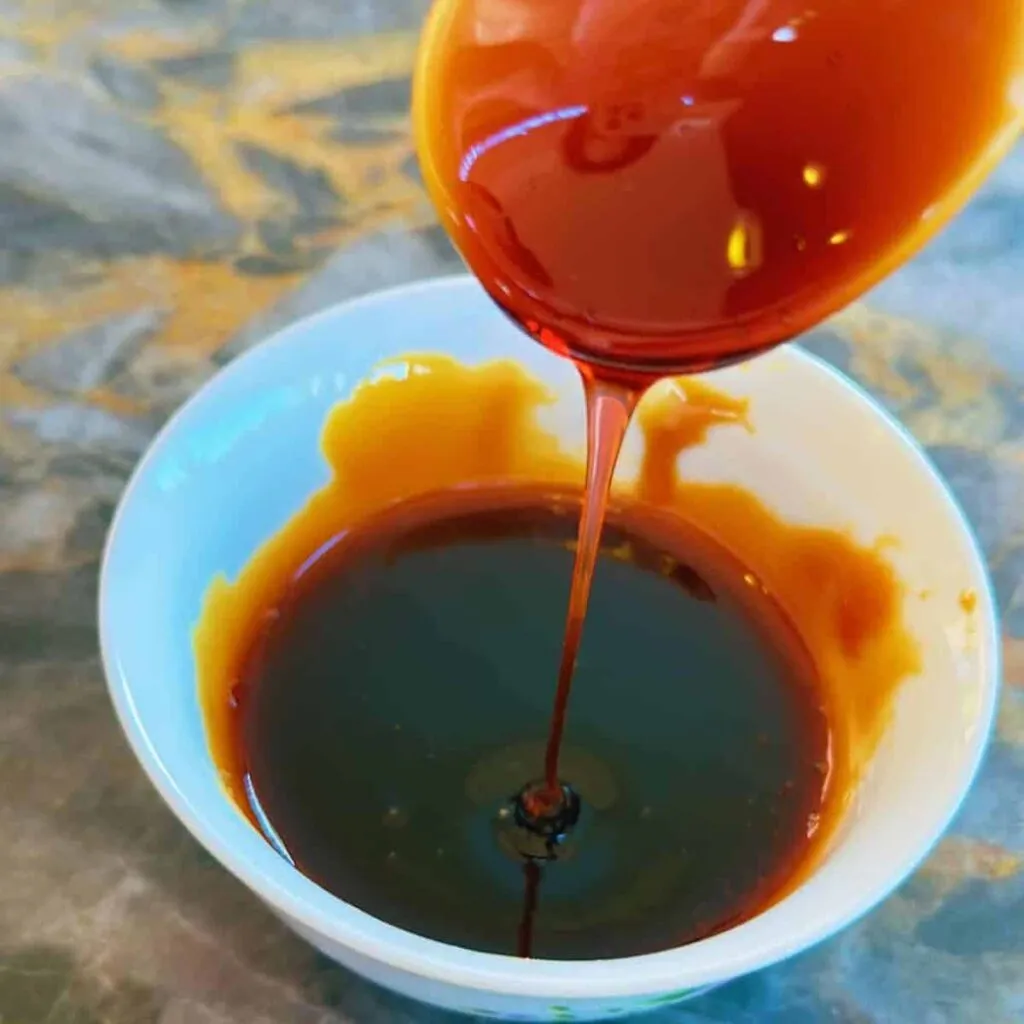
(Nước Màu)
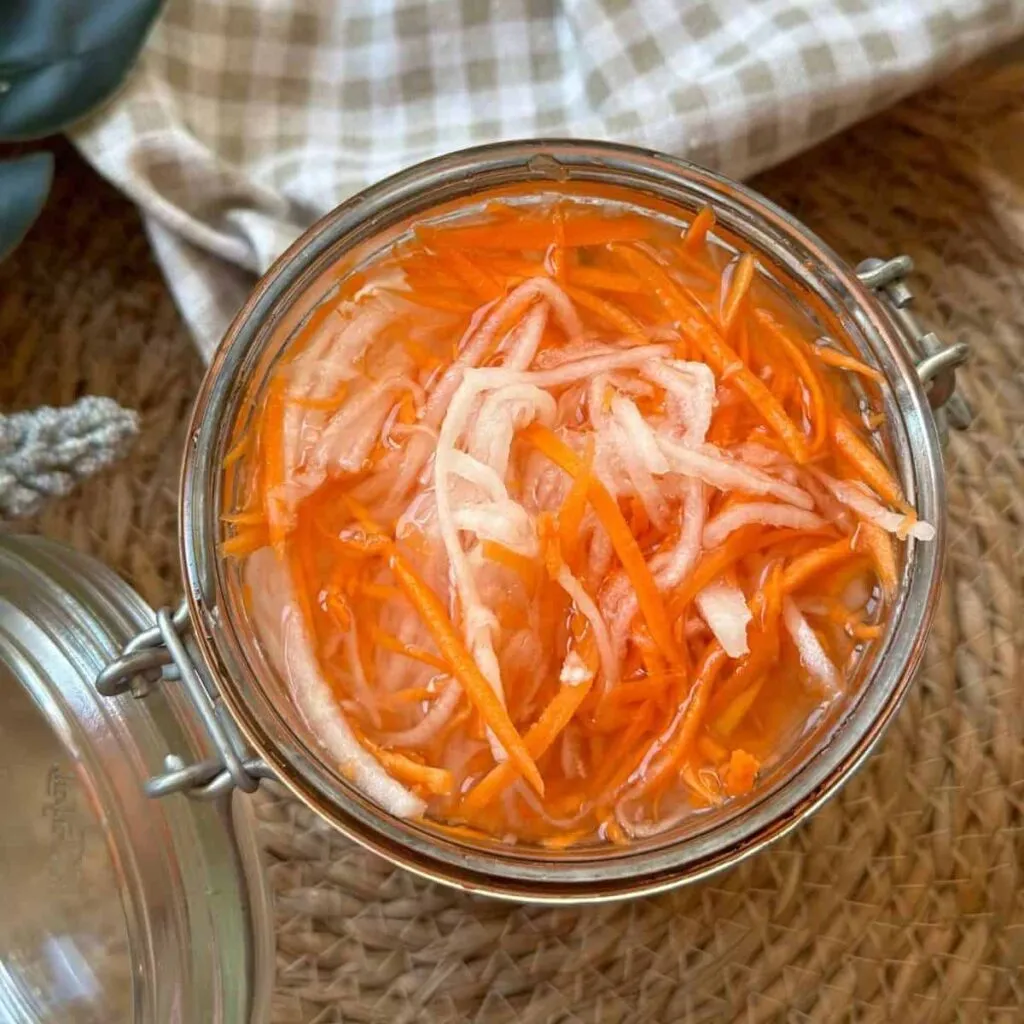
(Đồ Chua)

(Mỡ Hành)
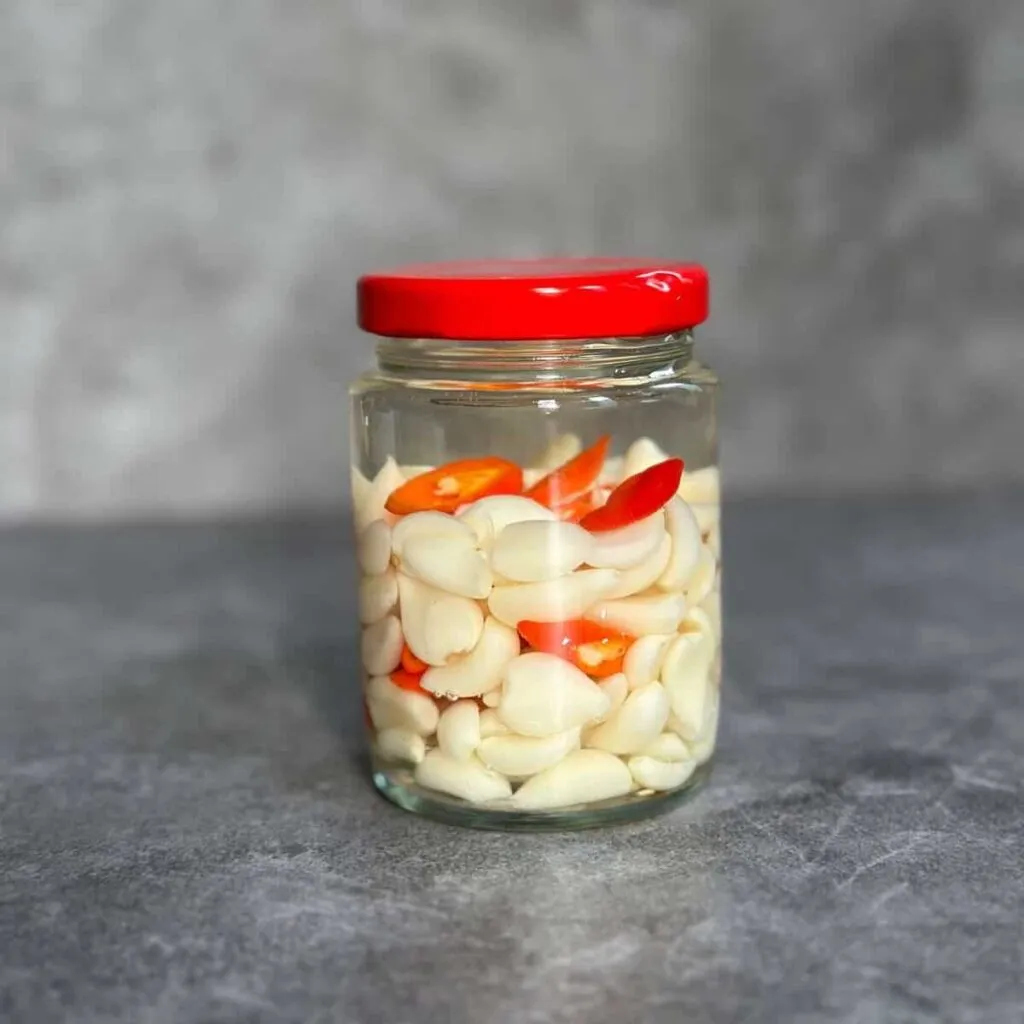
(Giấm Tỏi)
Instructions
Step 1: Mince the lemongrass, garlic and shallots (and galangal, if using)
- Finely mince lemongrass and galangal using a food processor. This gives the sauce a smooth texture and prevents chunky bits of lemongrass. (Frozen minced lemongrass works great too!)
- Mince garlic and shallots, too.
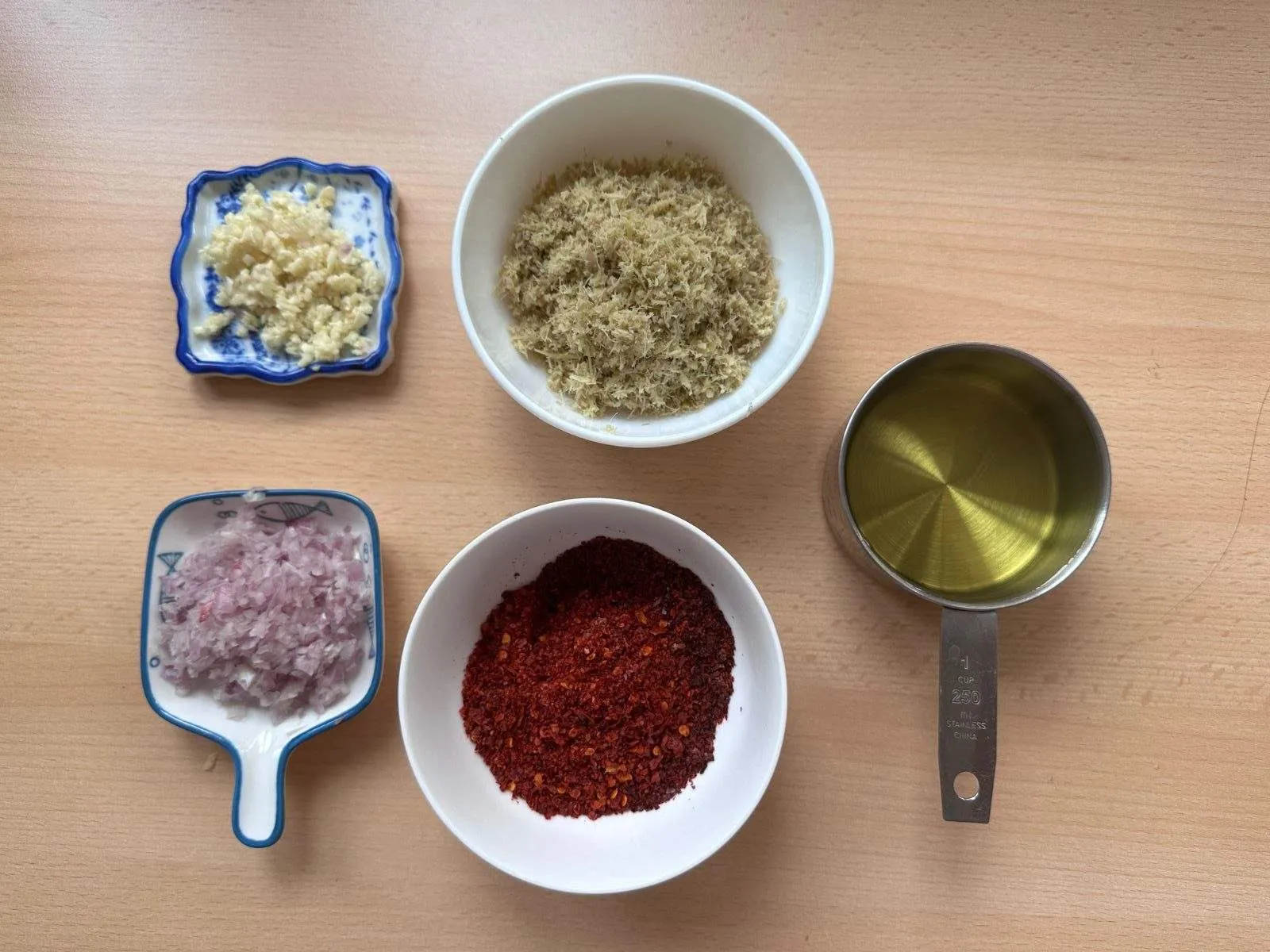
Step 2: Prepare the chili mixture
- In a small bowl, mix chili flakes with a bit of water, sugar, soy sauce, and vegetable bouillon powder. This step helps keep the chili from burning later when it hits the hot oil.
Step 3: Fry the aromatics
- Heat about ¾ of the cooking oil in a saucepan. To check if it’s hot enough, dip a chopstick in — if small bubbles rise from the tip, it’s ready.
- Add minced shallots and lower the heat to medium. Sauté for about 30 seconds, then add minced garlic. Keep stirring and cook for around 2 minutes, until they turn slightly golden and fragrant.
- Stir in the minced lemongrass and galangal. Cook on medium heat for about 3 minutes, stirring occasionally, until the lemongrass softens and starts to take on a bit of color.
Step 4: Add the chili mixture
- Pour in the chili flake mixture and continue cooking over medium heat for about 5 minutes, stirring constantly so nothing burns.
- You’ll know it’s done when the sauce thickens into a glossy, jam-like texture and smells wonderfully aromatic. Add the remaining oil and adjust the seasoning to taste.
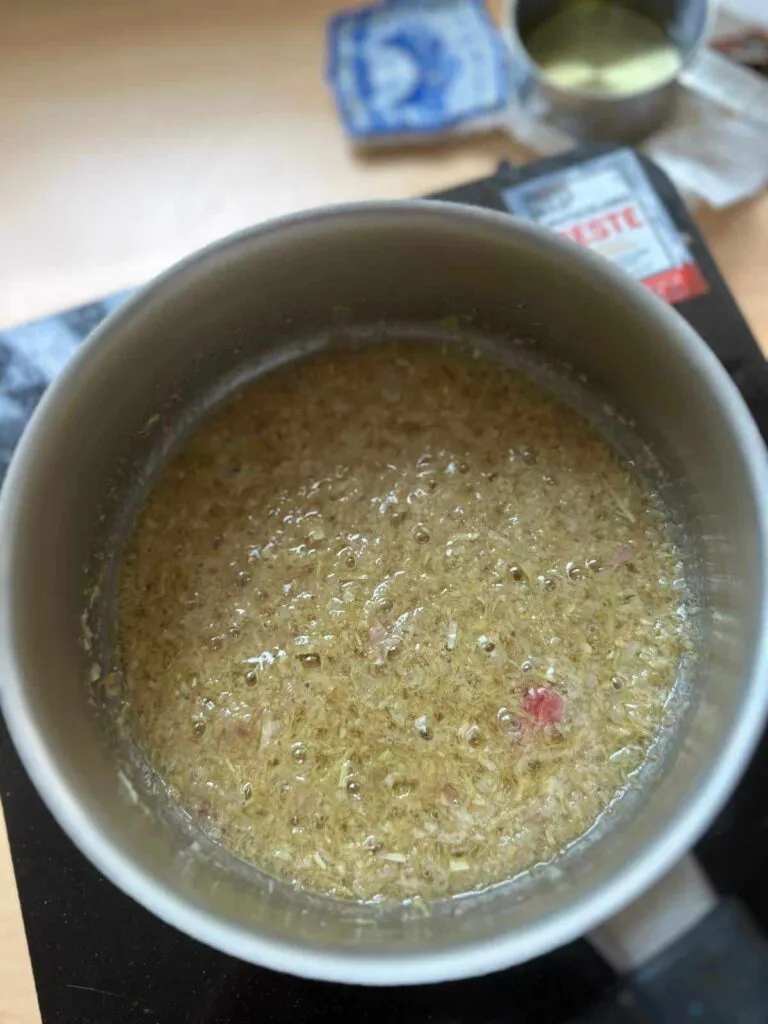

Step 5: Cool and store
- Transfer the Sa Tế sauce to a clean bowl or jar and let it cool completely.
- Store it in an airtight container in the fridge — it keeps beautifully for several months.

Tips & Variations
Cook on medium heat:
When sautéing lemongrass, garlic, and shallots, stick to medium heat. High heat can burn them quickly and turn the sauce bitter. Medium heat lets the aromatics release their fragrance slowly and infuse the oil with all that goodness.
Use fish sauce or shrimp paste:
For the classic version, swap soy sauce for fish sauce or a bit of mắm ruốc (Vietnamese shrimp paste). This adds a deep, savory punch that beautifully complements the spices and aromatics.
Add dried shrimp:
To boost the umami even more, try adding finely chopped dried shrimp — this version is known as Sa Tế Tôm (Shrimp Sa Tế). It gives the sauce a rich depth and a subtle seafood note that’s hard to resist.

How to Use Sa Tế
This versatile sauce instantly boosts almost any dish. Here are some easy ways to enjoy it:
🍜 Noodle soups: Add a spoonful to Phở Bò, Phở Gà, Hủ Tiếu Nam Vang, Hủ Tiếu Mì or Bún Bò Huế for extra heat and aroma.
🥢 Spring rolls: Mix it into hoisin peanut sauce — perfect with Gỏi Cuốn, Nem Nướng Cuốn, Bò Bía and Chicken Spring Rolls.
🍚 Rice & noodle bowls: Drizzle over Cơm Tấm, Bún Gà Nướng, or Bún Thịt Nướng for a spicy kick.
🔥 Marinade substitute: Use it instead of minced lemongrass for grilled dishes like Lemongrass Pork Chops, Grilled Lemongrass Chicken, or Thịt Nướng (Vietnamese Grilled Pork).
🥘 Stir-fries: Toss a spoon into stir-fries like Gà Xào Sả Ớt (Stir-fried Lemongrass Chicken) or Bún Bò Xào (Beef Noodle Salad).
🍢 Snacks & veggie dishes: Try it with Rice Paper Salad or Lemongrass Fried Tofu.
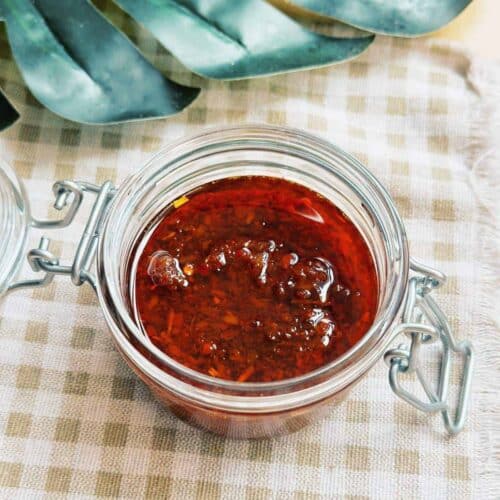
Sate Sauce – Vietnamese Lemongrass Chili Oil
Equipment
- 1 Saucepan
- 1 Food Processor
Ingredients
- 4 stalks lemongrass
- 2 tbsp minced garlic (15g)
- 4 tbsp minced shallots (30g)
- 1 tsp minced galangal (5g) (optional)
- 4 tbsp hot chili pepper flakes
- 3 tbsp Korean pepper flakes (Gochugaru)
- 3 tbsp water
- 2 tbsp soy sauce (to your taste)
- 1 tbsp sugar (to your taste)
- 1 tsp vegetable bouillon powder (to your taste)
- 1 cup vegetable oil (240ml)
Instructions
- Use a food processor to finely chop the lemongrass and galangal (optional). This will give you a smooth texture and prevent large pieces of lemongrass in your sauce. Alternatively, you can use frozen minced lemongrass.
- Mix the chili pepper flakes with water and the seasonings (sugar, soy sauce, and vegetable bouillon powder). Water helps to prevent the chili flakes from burning when you add them to the hot oil.
- Heat ¾ of the cooking oil in a saucepan. To check if the oil is hot enough, dip a kitchen chopstick into the oil. If bubbles slowly come from the tip, it means the oil is ready. Add the minced shallots and reduce the heat to medium. Cook the shallots for about 30 seconds, then add the minced garlic.
- Stir-fry the shallots and garlic in the oil for around 2 minutes or until they turn slightly golden. Next, add the processed lemongrass and galangal (if using). Cook on medium heat for about 3 minutes, stirring occasionally, until the lemongrass reduces in volume and gets a bit of color.
- Add the chili flake mixture into the saucepan and cook it over medium heat for about 5 minutes. Keep stirring to prevent the chili flakes from burning. The lemongrass chili oil is ready when the liquid reduces, the sauce becomes glossy and jam-like, and it has a wonderful aroma. You can add the remaining oil and adjust the seasoning to your taste.
- Transfer the sate sauce to a bowl or container and let it cool completely. Store Sate chili oil in an airtight container in the refrigerator, where it will stay good for several months.
